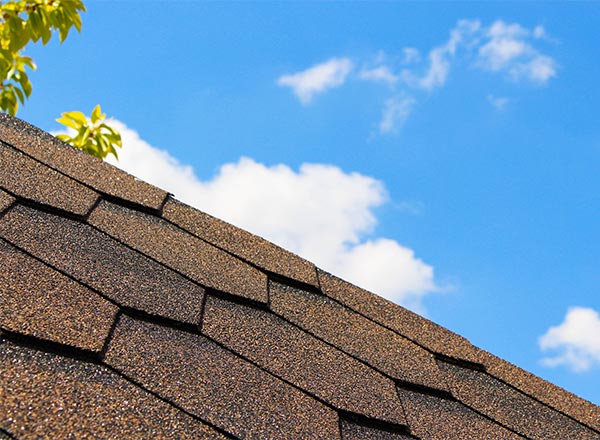Replace or Repair a Roof?
Many times, roofing with asphalt shingles can be maintained by an inspection and repair model before an entire replacement is needed. A detailed inspection and maintenance program is needed, however, to ensure that areas of common failure in a roof, such as around flashing, where gutters connect to the roof, areas around chimneys and skylights, were properly installed and are maintaining an intact roof against water incursion.
If there is widespread failure of the shingles, such as can happen with age, after a storm, if they were improperly installed, or after an impact, the shingles are removed and areas of flashing and gutters are inspected. Any areas of dry rot or significant water incursion are repaired before re-roofing.
Standards for Installation
Replacing asphalt shingles, or an entire re-roofing job, if not a DIY project. In order to use shingles, the roof needs a pitch of at least 2/12, with the recommended 4/12 pitch. This means an elevation of four inches for every twelve inches of vertical movement of the roof. This degree of pitch needs safety gear and training for installers.
Most asphalt shingles are installed on the roof with both a pre-installed adhesive and roofing ties, either staples or roofing nails. The placement and number of these fastenings determined how the shingles fare in a high wind. The areas of flashings, roof incursions such as chimneys, stovepipes, and skylights, and gutters are tricky to install properly, and are a major source of roof failure when water gets under the flashings. In addition, peaks and valleys in the roof line have to be roofed in a special way, with the shingles woven together, so the changing roof line has the proper thickness of shingles.
Standards for installation and materials are covered in both building codes and manufacturer's warranties. A home-owner's insurance policy will not cover a roof unless it is installed to code. The warranty on the shingles will be voided if not installed to both the manufacturer's standards and building codes. Dan Tennis Roofing provides both materials and professional installation that meet and exceed local building codes and manufacturer's installation standards.
Choosing the Best Shingles for Your Roofing Project
Climate is an important variable in picking the right shingle for your roofing project. Lighter colored shingles are usually recommended for sunny climates to reflect solar radiation. Dark colored shingles absorb heat, so are popular in northern climates.
In areas where algae growth on shingles is a common problem, shingles are available to retard algae growth. AR shingles, for algae-retarding, contain copper or titanium dioxide granules in the embedded stone top layer of the shingle. These tiny amounts of metal help prevent the black streaks or other signs of algae or mold growth that are common in hot and humid climates.
Economics is also a factor. 3-tab shingles are less expensive both for the shingles themselves and for the installation; they have a shorter replacement life, and will usually need to be replaced or repaired at around fifteen years. Architectural or dimensional shingles are longer lasting; many are not going to need replacement for thirty years or more.
In addition to being longer-lasting, architectural or dimensional shingles have a greater range of textures, colors, and patterns. They can be laid in specialty patterns, such as herringbone patterns. They can give the irregular and asymmetrical look of a roof made from hand-cut cedar shakes.
Information from the manufacturer can detail if a shingle is made for a specific climate or weather condition, such as those designed for high-wind installations. In addition, the warranty details how long the shingle is covered for replacement, if installed to code and the manufacturer's standards for installation. Replacement can occur if the shingle fails in the weather it was designed for--for example, if it loses the top stone layer, cracks, has small pieces of the edge break off, or becomes brittle from the sun and heat. All of these are considered material failures, as the shingles no longer prevent water incursion.
Inspection and Maintenance
New shingle roofs should be inspected yearly for signs of damage from impacts, for wind or water damage to individual shingles, to areas of known weakness, such as where gutters attach or flashing around chimneys and skylights. As a roof begins to age, a roofing professional may recommend twice yearly inspections with repairs as needed. This sort of careful inspection and repair can prevent long-term damage from water incursion, and delay a full roof replacement.
After storms or significant weather events, roofs should be inspected and repaired against impact damage. After the autumn leaf-fall, roofs that are under or near trees should be inspected to make sure there is not a significant amount of organic matter, such as piles of leaves, sitting on the roof. If there has been extreme temperature variability, such as a sudden freezing spell with hail and ice, the roof should be inspected, with careful attention to flashing around the chimney. Temperature variability can cause the materials of a roof to expand and contract enough for snow or water incursion to occur.
Thank you for trusting us with your asphalt shingle roof repair. We look forward to working with you.

